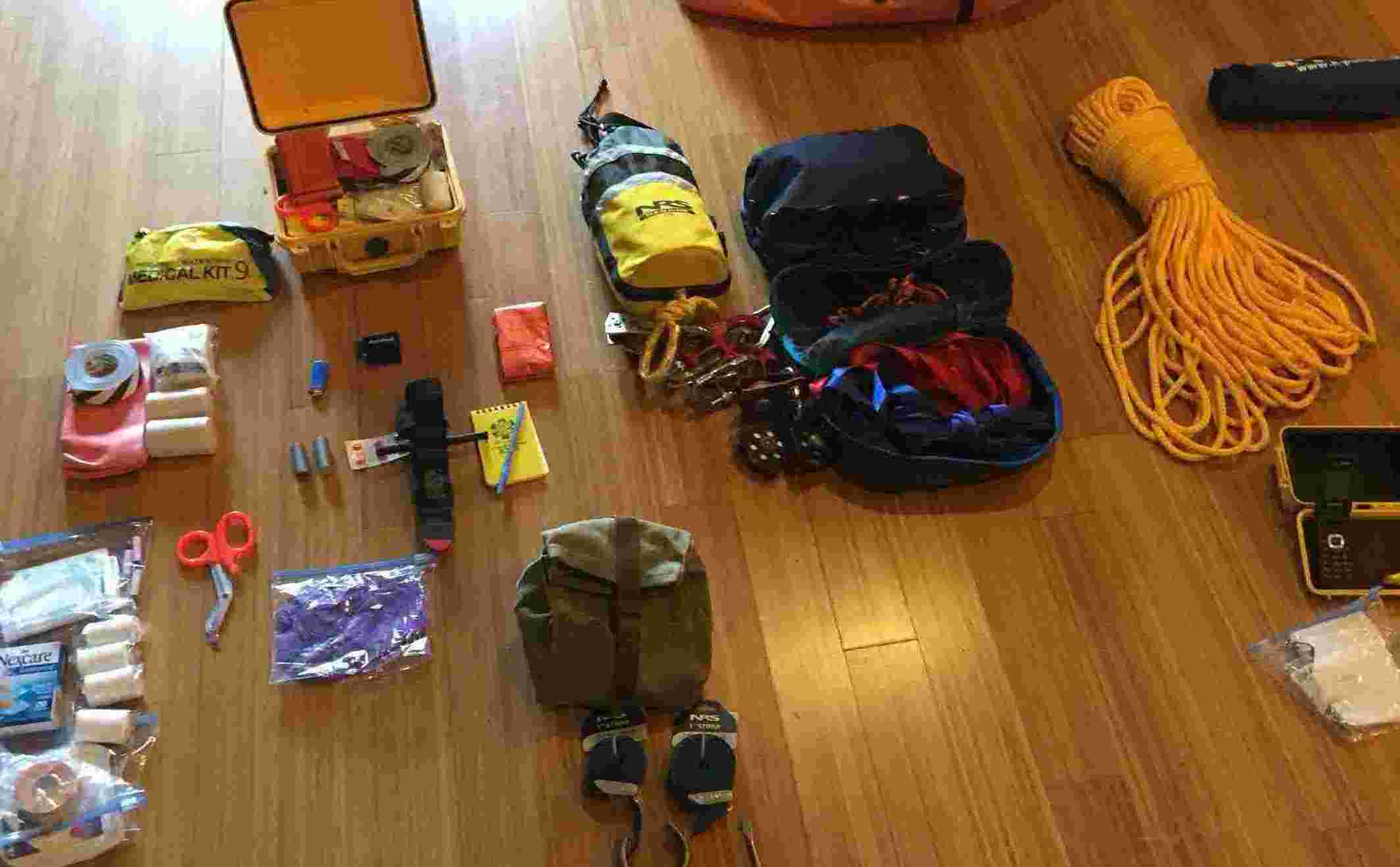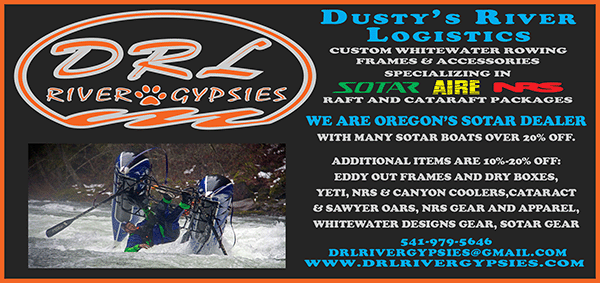Gear Review
Pin Kits

There is perhaps no single piece of equipment other than the raft itself, which is more critical to safety than a well organized and comprehensive sweep kit. There are many names for these kits and they come in all shapes and sizes and in many different containers. They’ve been called; pin kit, oh shit kit, rescue bag, emergency gear bag, or even the “hold my bear and watch this” kit. They’re most commonly contained within a drybag on river rafting trips, but are also inside Pelican cases, or more recently, Watershed bags. The pin kit can be large or small depending on the situation, but needs to be able to be carried by one person, and must be able to be removed from the raft in an emergency. It’s possible that each raft on a whitewater rafting trip could have it’s own “sweep”, but most likely there will be one designated sweep raft that will contain the sweep kit, will be designated to be the default last raft through each rapid (to ensure to keep all emergencies downstream of the capability to recover), and in a raft that is guided by a rafter with adequate medical and rescue training. The ideal situation would be to have a raft with less gear, and thus less likelihood of being pinned, that is being guided by an experienced guide with both advanced medical training (either a Wilderness First Responder or an EMT would be ideal) and who is also trained in Swiftwater Rescue procedures. At the very least, the kit should have within it the gear required to perform any foreseeable rescue situation, and the person who has access to the kit should have the knowledge to use the gear appropriately.
Size and Contents of the Kit
Simply put, if the kit is sparsely stocked with gear, it’s more possible that in a rafting rescue you will not have the means to get your crew to safety. Conversely, the larger your kit the heavier it will be, and in extreme cases could make a rescue more possible by weighing your raft down so much that it’s less responsive. So, here is a list of things that the guides at Triad River Tours unanimously agree should be in the sweep kit of every Washington rafter (please note that this is all in addition to standard equipment kept on every raft; i.e. throw bags, spare PFD, pump, etc. etc.).
-
Comprehensive medical kit including:
-
o Splint
-
o Extra tagaderm and wound kit
-
o CPR Mask
-
o Gloves
-
o Benadryl
-
o Tourniquet
-
-
Pin Kit
-
Z-drag kit
-
Static rope (200’ or more)
-
Locking carabiners
-
Ball bearing pulleys
-
Prussic
-
Rigging plate (optional)
-
1” tubular Webbing
-
-
Emergency blanket (Parka, sleeping bag, etc.)
-
Spare throw bag
-
Spare PFD (if not kept in raft)
-
Hardware backup
-
NRS frame tool
-
Leatherman type multi-tool
-
Spare oarlock(s) and rings
-
Duct tape
-
-
Very small pump (like a K-pump)
-
Evacuation kit
-
Map (printed and in waterproof container)
-
Extra whistle
-
Fire starting kit (lighter, etc.)
-
Verizon Cell phone (simple flip phone with no sim card for 911 only)
-
-
Waterproof notebook (or a notebook in a waterproof container)
Conclusion
A sweep kit is a malleable piece of rescue gear that is the last line of defense against life threatening emergencies while on a river rafting trip. Kayakers typically carry a few of these things, but they will not all fit inside a hardshell kayak. Rafters have the luxury of added room, and the contents in a sweep kit are all more important than extra beer; so if you plan on going rafting, and especially if you are planning a trip without road access, please get to work on creating your own sweep kit. You will be glad you did. On the river, it’s not a question of if, but a question of when you will have an emergency, and preparedness is the most obvious, yet most often neglected aspect of whitewater river rafting. Furthermore, practicing rescue techniques, even if it’s just once per year on a lake or even in your back yard, will instill confidence in you as you take your friends and family rafting, and will thus enhance your trip and provide a more pleasant experience. We have a saying on the river that if it’s a medical emergency that our job is to “stabilize and evac”, and so remember that in any emergency without the use of a helicopter, your job is going to get your patient to the road so that emergency EMS crews can get them into an ambulance. They will not have the ability to rescue you or a member of your rafting party from the river, so keep this in mind.

